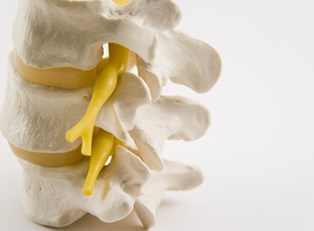Ankylosing spondylitis is a rare but painful condition in which a person’s vertebrae begin to fuse together. It’s considered a form of arthritis, and as such it can cause joint pain, stiffness, and lack of mobility—especially in the lower back and hips. Here’s a look at everything you need to know about this unusual disease, including its symptoms, causes, prognosis, and treatments.
Symptoms
Symptoms of AS typically progress gradually, which means that many sufferers are unaware of their condition until it’s become quite severe. It’s estimated that the difference between the onset of the illness and diagnosis can be upwards of 10 years.
Some of the earliest signs of the disease include lower-back stiffness and pain in a patient’s hips or shoulders in the morning or after long periods of rest and arthritis. As ankylosing spondylitis becomes worse, sufferers may have trouble breathing deeply and can develop heart or lung problems.
Causes
While there is still a lot of research to be done about the origins of this condition, it appears to be almost entirely genetic. Almost 90% of people living with AS have the presence of the HLA-B27 gene, which has led scientists to believe that it plays an important role in the development of the disease. However, this does not necessarily mean that all carriers of it will develop ankylosing spondylitis—rather, they are simply at a higher risk. A family history of this condition is also another indicator that a person’s risk for AS is higher than normal.
Prognosis
The prognosis for patients with AS is directly related to the severity of their symptoms. Some people (especially women) experience only a mild form of the disease that may limit flexibility and mobility but will otherwise leave them unaffected. However, in severe cases, AS can cause dangerous respiratory or circulatory problems that increase a person’s risk of death.
Treatment
There is currently no cure for AS, so treatment primarily involves pain management and regulating symptoms. Anti-inflammatory drugs are a common method, as they have proven to reduce stiffness and promote mobility. However, physical therapy is also another frequent choice, since movement can lessen pain, at least temporarily. When used, most physical therapists focus on stretches and exercises to promote good posture. While surgery is normally not necessary, if a person’s AS is particularly severe, he or she may need a hip replacement.



